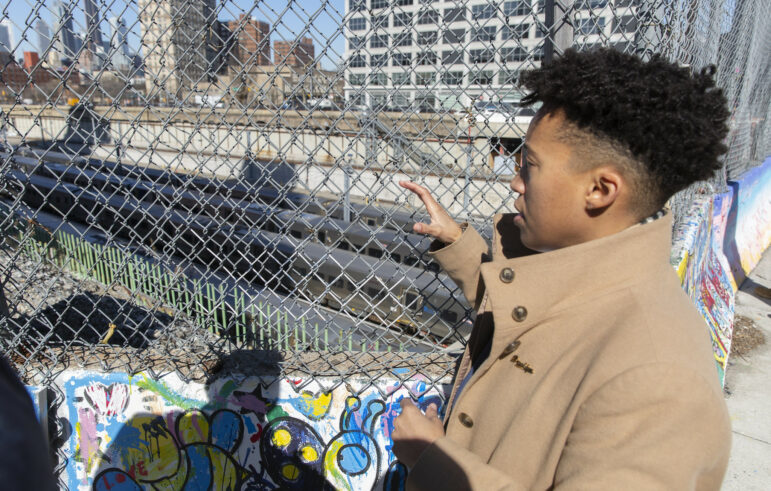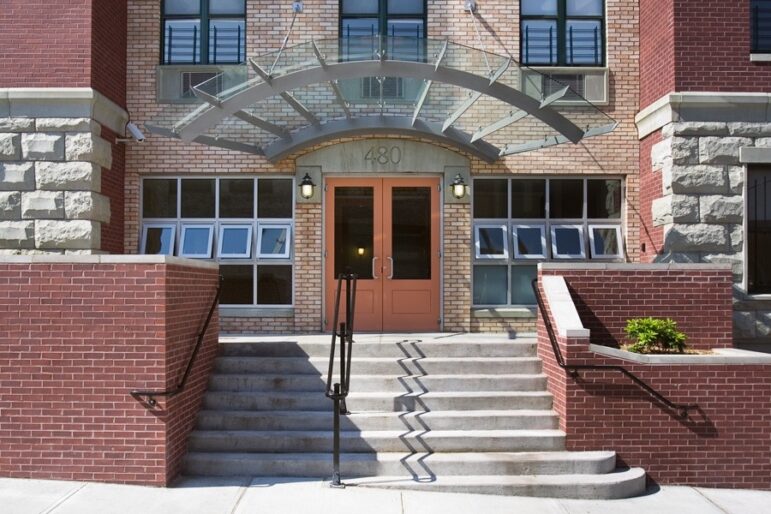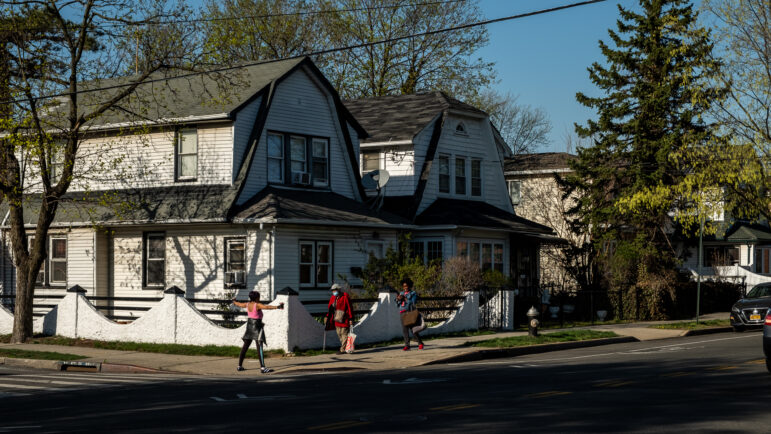
New York City will on Monday begin the land-use process to close and replace Rikers Island, which will dramatically shrink the size of New York’s jail system. This is a critical moment for the communities that have been harmed by Rikers Island for decades. Those of us who helped lead the campaign to #CLOSErikers anticipated that the conversation around closing Rikers would eventually shift from serious moral questions to a mere land-use debate. On the day of Mayor de Blasio’s commencement of the Uniform Land Use Review Procedure (ULURP) to close and replace Rikers, as a city we must re-set the conversation.
Let’s begin with areas of broad consensus among policymakers, advocates, and the public: First, Rikers Island is a terrible place that should have been closed a long time ago. Second, de Blasio’s plan to close Rikers has been uninspired in design and lackluster in roll-out. Third, communities across the city are concerned with the size and cost of the proposed jails. Fourth, we cannot replicate the toxic culture of Rikers Island. Fifth and most important, mass incarceration cannot be solved without significant educational, economic and health investments into directly impacted communities. During inevitable disagreements over the coming months, we can ascertain whether people come to this debate in good faith by grounding the conversation in these principles.
First, the debate must begin from the premise that Rikers will be closed. Though some are trying to re-open that question, closure is the consensus position of Governor Cuomo, the mayor, Speaker Johnson, Public Advocate Williams, and an overwhelming majority of the City Council. This position was reached after years of community pressure and pained testimony from individuals and families whose lives were harmed by the uniquely torturous and isolated conditions on Rikers Island. The city must close Rikers and bring those who remain incarcerated closer to their lawyers and families.
Likewise, there is consensus that closing Rikers requires a large reduction in the number of people jailed in New York City. A city jail system that incarcerated 23,000 New Yorkers daily in the early 1990s, and over 10,000 when the #CLOSErikers campaign started, is now below 8,000. Every elected official serious about closing Rikers must push for ways to reduce the number further. After years of movement pressure, state legislation such as bail reform, speedy trial and discovery are on the cusp of passage in Albany, which would significantly reduce pretrial incarceration in New York. New York’s five prosecutors must reform their most punitive practices, especially Manhattan District Attorney Cy Vance, the city’s leading jailer. The City Council must focus on community investment in the next city budget, and also ensure that our overburdened public defenders are properly resourced.
If stakeholders remain focused on driving jail numbers down, de Blasio must accept significant changes to his plan. After all, the point of seeking input during ULURP is to strengthen and modify proposals. The administration has not properly acknowledged community concern with the proposed new jail in the Bronx and rebuilds in Manhattan, Brooklyn and Queens, especially the proposed height of the facilities and their enormous price tags. The more we can reduce the number of people in the city’s jail system, the smaller and less expensive the new facilities can be. Those concerned about costs should also recognize that closing Rikers itself will save the city more than one billion dollars a year in operating costs.
Even though closing Rikers has been a robust city-wide conversation since early 2016, constructive new ideas should still be considered. For example, Borough President Diaz, Jr. just proposed a site for the Bronx facility on state-owned land next to the county courthouse that was previously off the table politically. It is a better choice than the current proposal, but if the offer is serious, city and state officials must quickly act on it and not use the proposal as a stall tactic.
Likewise, some advocates argue that we can close Rikers (and, for that matter, the Barge in the Bronx) without building or rebuilding any new jails. This would leave New York City’s population of more than eight million with about 1,600 jail beds in the Manhattan Tombs and Brooklyn House of Detention. Both are wretched, inhumane, facilities in their own right. People supporting this position have not yet articulated how achieving this is possible, but now is the time to make the case.
And for all its shortcomings, de Blasio’s plan, it is not a “jail expansion,” as some recent press has characterized it. The city currently has 14 jails (10 on Rikers), 11 of them active, collectively holding 15,000 jail beds. Even if Mayor de Blasio’s plan were adopted without further reductions, it would shrink the system to four jails and fewer than 6,000 beds. That is a significant contraction, not an expansion.
Finally, as we re-set the conversation, it is most important to lift up the campaign slogan since Day One: “#CLOSErikers, Build Communities,” a commitment to investing resources into communities most harmed by mass incarceration. By the time someone winds up in the criminal legal system, we as a city have collectively failed that person. In the process of closing Rikers and greatly reducing the city’s jail footprint, we must also discuss how to provide services such as mental healthcare and treatment for addiction outside the jail system. For example, the mayor’s belated proposal to create more hospital beds for the seriously mentally ill is a critical component in reducing the need for incarceration, but these facilities must be run by Health & Hospitals, not by the Department of Corrections.
Get the best of City Limits news in your inbox.
Select any of our free weekly newsletters and stay informed on the latest policy-focused, independent news.
Even as crime has fallen dramatically in New York, the city has doubled down on more money for police, prosecutors, and correctional supervision. This does nothing to address the root cause of crime. The city and state must work to create educational and economic opportunities in long-ignored parts of New York, and eradicate the clouds of hopelessness that hang over certain over-policed neighborhoods. When fewer people are in jail and instead are living successful, healthy lives, we all win as New Yorkers.
Rikers Island has been a human rights atrocity since the 1930s, and we are closer than ever to closing it. An incredible coalition of people including formerly-incarcerated leaders, community groups, councilmembers and judges have gotten us this far. As we engage the ULURP process as a city, let’s stay focused on the jail complex’s closure, decarceration, and community reinvestment. We can still improve the administration’s plan and keep working towards an even more transformed criminal justice system. The time for talk is over, we must get this done.
Janos Marton is State Campaigns Manager for the ACLU’s Smart Justice Campaign, and managed the #CLOSErikers campaign from 2016-2017.









3 thoughts on “Opinion: It’s Time to Improve and Embrace the Plan to Close Rikers Island”
Closing Rikers and building new JAILS in the middle of highly populated areas is completely WRONG. PUBLIC SAFETY IS AT NO CONCERN TO THE MAYOR! JUSTICE REFORM and renovating RIKERS makes more sense, the infrastructure is already there. System needs to change. Wasting 10 to 30 BILLION taxpayers dollars to build new jails is a disgrace. Money could be spend to fix the MTA, NYCHA, VA, affordable housing, school programs, mental hospitals, free chid care, actually helping the homeless and not stealing 800 million trough ThriveNYC. Mayor is hell bent on building this new jails with his real estate buddies destroying the city and ripping off taxpayers ignoring their basic necessities. Mayor would rather see neighborhoods destroyed, watch how innocent people get mugged, punched, slashed, assaulted, robbed, shot, killed, just check out latest NYC news. CRIME is on the rise but mayor is downplaying it. IMPEACH DE BLASIO!!!!!!!
First, crime is down 8.4 percent so far this year. Robbery, Assault, Burglary, Grand Larceny and Grand Larceny-Auto are all down. Murder is up by 15 percent; there have been eight more murders so far this year than by this time last year. Rape is up 6.5 percent.
Second, there is neither a shred of evidence behind nor any logic to the notion that a jail increases public safety risk to its immediate neighborhood. The jails that have existed in downtown Brooklyn and near the courts in Manhattan bear witness to this daily.
De Blasio orchestrating “lower” numbers to artificially reduce Rikers population so he can get his borough jails. There are more aggravated assaults on the trains, more vicious attacks on COs, police is disrespected, mostly since De Blasio got his 2nd term, reducing eliminating punishment for committing crimes. Decriminalization doesn’t make the justice system fairer. It encourages bad behavior. If the crime is down, what happens if it goes up? Borough jail overcrowding? Why not renovate Rikers and actually focus on much needed programs for NYC residents who are struggling to live in NYC and do not break the law. Brooklyn Detention center having no heat is getting much attention. Why residents not having heat or hot water in public housing? Why are their needs ignored?! City pouring money down the drain on NYCHA and not fixing basic needs! De Blasio is mismanaging taxpayers $$$ and building new jails is not what NYC needs.